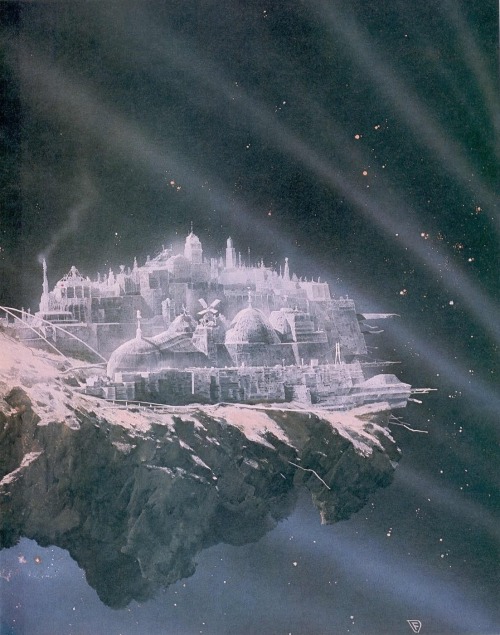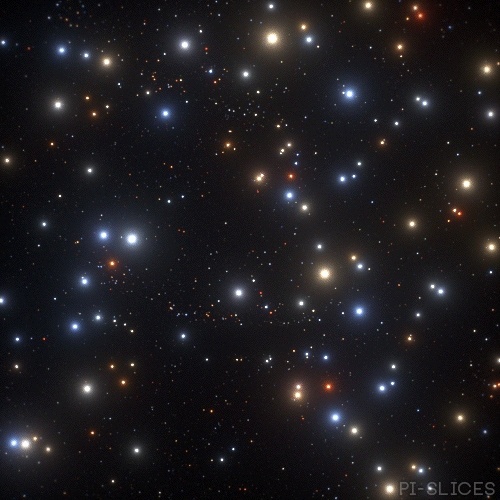Chris Foss

Chris Foss
More Posts from Epic-flight and Others

Iapetus, moon of Saturn, observed by the Cassini probe on September 10, 2007, from a distance of about 73,000 kilometers.

Charon, moon of Pluto, observed by NASA's New Horizons probe just before closest approach on this day in 2015. (It flew within 12,500 km of Pluto and as close as 27,000 km to Charon.)

On My Way.
Twitter / Instagram / Gumroad / Patreon
KnownOrigin / SuperRare / Zedge

VMF-422 Corsairs

Lynds Dark Nebula 1251 : Stars are forming in Lynds Dark Nebula (LDN) 1251. About 1,000 light-years away and drifting above the plane of our Milky Way galaxy, the dusty molecular cloud is part of a complex of dark nebulae mapped toward the Cepheus flare region. Across the spectrum, astronomical explorations of the obscuring interstellar clouds reveal energetic shocks and outflows associated with newborn stars, including the telltale reddish glow from scattered Herbig-Haro objects seen in this sharp image. Distant background galaxies also lurk on the scene, buried behind the dusty expanse. This alluring view imaged with a backyard telescope and broadband filters spans about two full moons on the sky, or 17 light-years at the estimated distance of LDN 1251. via NASA

Winter - 220102








TDS “Paladin” - Fractured Space - Hans Palm




Sci-fi art by Isaac Hannaford.
-
 lauria-katt liked this · 2 months ago
lauria-katt liked this · 2 months ago -
 averagemetallicahater liked this · 4 months ago
averagemetallicahater liked this · 4 months ago -
 bunnyholiday liked this · 7 months ago
bunnyholiday liked this · 7 months ago -
 asushunamir2051 reblogged this · 1 year ago
asushunamir2051 reblogged this · 1 year ago -
 asushunamir2051 liked this · 1 year ago
asushunamir2051 liked this · 1 year ago -
 metalchocolatedoughnut liked this · 1 year ago
metalchocolatedoughnut liked this · 1 year ago -
 sadhappymealdigital reblogged this · 1 year ago
sadhappymealdigital reblogged this · 1 year ago -
 forlath liked this · 1 year ago
forlath liked this · 1 year ago -
 abyssalgoat liked this · 1 year ago
abyssalgoat liked this · 1 year ago -
 gothieck liked this · 1 year ago
gothieck liked this · 1 year ago -
 scots-dragon liked this · 1 year ago
scots-dragon liked this · 1 year ago -
 vaguelyethereal reblogged this · 1 year ago
vaguelyethereal reblogged this · 1 year ago -
 vaguelyethereal liked this · 1 year ago
vaguelyethereal liked this · 1 year ago -
 msaprildaniels reblogged this · 1 year ago
msaprildaniels reblogged this · 1 year ago -
 epic-flight reblogged this · 1 year ago
epic-flight reblogged this · 1 year ago -
 newcamelot liked this · 1 year ago
newcamelot liked this · 1 year ago -
 jazzlin liked this · 1 year ago
jazzlin liked this · 1 year ago -
 scrollsomemo reblogged this · 1 year ago
scrollsomemo reblogged this · 1 year ago -
 usual-suspect reblogged this · 1 year ago
usual-suspect reblogged this · 1 year ago -
 gvnther-hopeful liked this · 2 years ago
gvnther-hopeful liked this · 2 years ago -
 o-berenice-o reblogged this · 2 years ago
o-berenice-o reblogged this · 2 years ago -
 o-berenice-o liked this · 2 years ago
o-berenice-o liked this · 2 years ago -
 baddawgs reblogged this · 2 years ago
baddawgs reblogged this · 2 years ago -
 feminerds liked this · 2 years ago
feminerds liked this · 2 years ago -
 complexfantasy liked this · 2 years ago
complexfantasy liked this · 2 years ago -
 yearofthediamond-dogs reblogged this · 2 years ago
yearofthediamond-dogs reblogged this · 2 years ago -
 hb-sides reblogged this · 2 years ago
hb-sides reblogged this · 2 years ago -
 user961698 liked this · 2 years ago
user961698 liked this · 2 years ago -
 zehpeh liked this · 2 years ago
zehpeh liked this · 2 years ago -
 hec34 liked this · 2 years ago
hec34 liked this · 2 years ago -
 galestorm55 liked this · 2 years ago
galestorm55 liked this · 2 years ago -
 sha-bba reblogged this · 2 years ago
sha-bba reblogged this · 2 years ago -
 sha-bba liked this · 2 years ago
sha-bba liked this · 2 years ago -
 tagomag0 reblogged this · 2 years ago
tagomag0 reblogged this · 2 years ago -
 delightfulpandanutt reblogged this · 2 years ago
delightfulpandanutt reblogged this · 2 years ago -
 xdiver71 liked this · 2 years ago
xdiver71 liked this · 2 years ago -
 sssketch liked this · 2 years ago
sssketch liked this · 2 years ago -
 fleetofwarships liked this · 2 years ago
fleetofwarships liked this · 2 years ago -
 bslimkid liked this · 2 years ago
bslimkid liked this · 2 years ago -
 thestebo-rxwx liked this · 2 years ago
thestebo-rxwx liked this · 2 years ago -
 jplovecraft liked this · 2 years ago
jplovecraft liked this · 2 years ago -
 means-few-ends-none reblogged this · 2 years ago
means-few-ends-none reblogged this · 2 years ago


